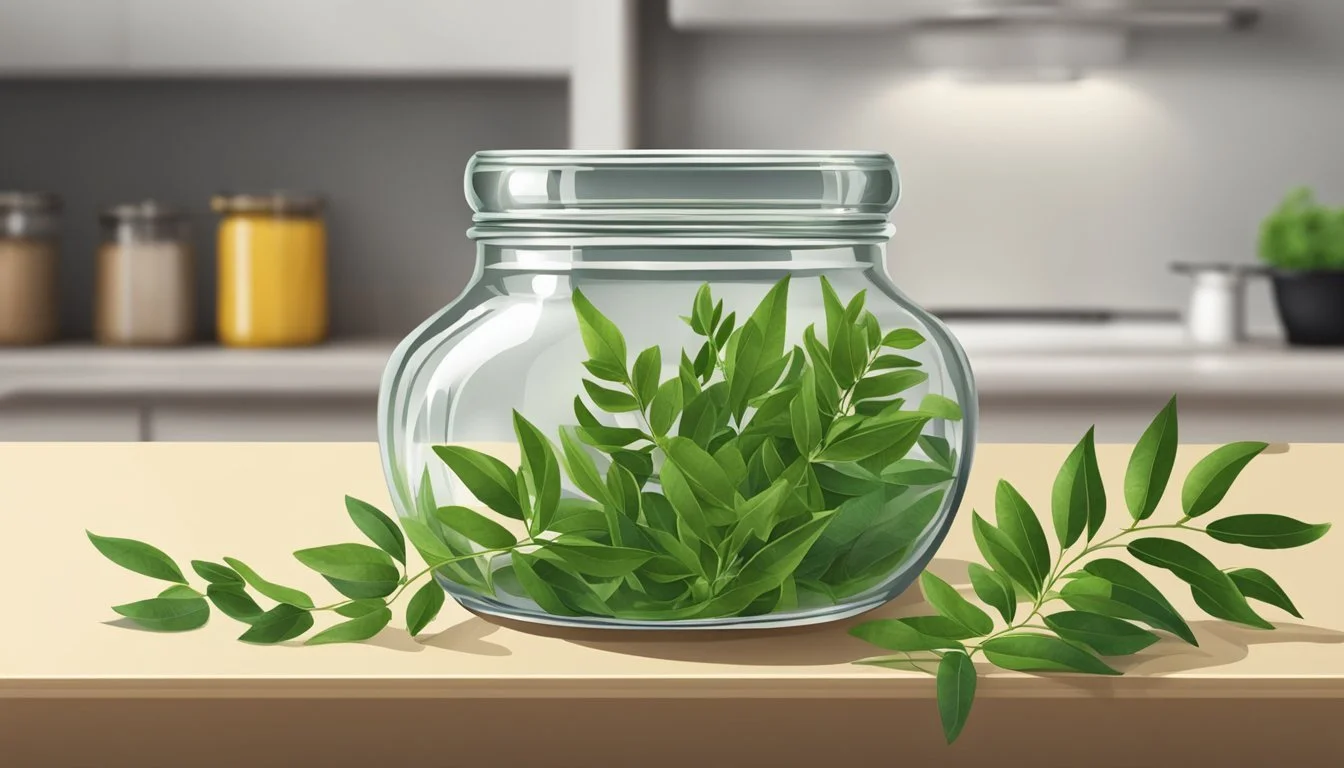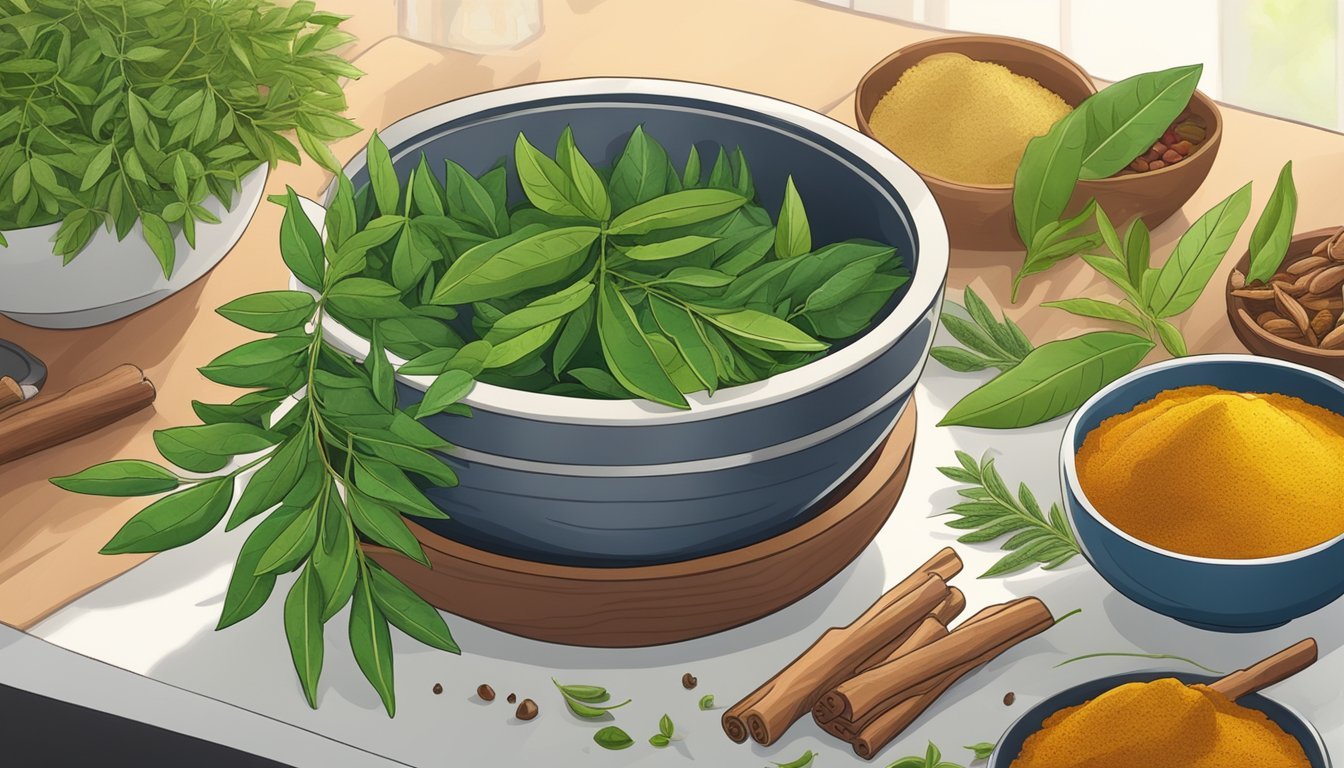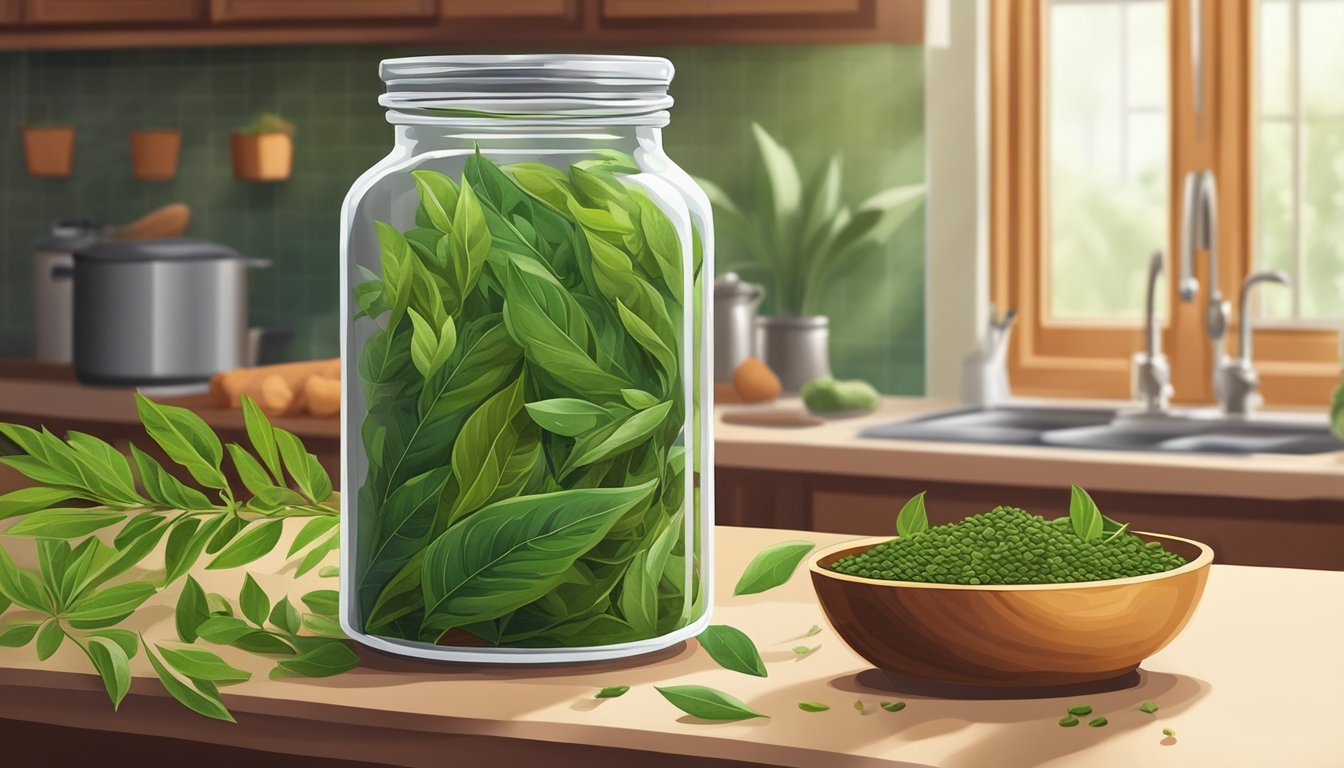How Long Do Curry Leaves Last?
Shelf Life and Preservation Tips
Curry leaves (how long does curry leaves last?), known for their distinct and robust aroma, are an essential ingredient in Indian cuisine. The leaves are heralded not just for their flavor but also for their aromatic contribution to a myriad of dishes. They hold a place of pride in the pantheon of spices, able to imbue meals with a depth and complexity that is hard to replicate with any substitute. As a staple in kitchens where the leaves are integral to culinary traditions, understanding their shelf life is important for chefs and home cooks alike.
The longevity of curry leaves varies depending on the storage method. When fresh, these leaves can be kept at room temperature for a short period, typically a few days before they start to lose their vibrancy. For longer preservation, refrigeration is advisable, allowing the leaves to maintain their aroma and flavor for a couple of weeks. The freezer offers an even more extended option, with the potential to keep curry leaves fresh and aromatic for several months to a year.
To maximize the flavor retention, proper storage techniques are crucial. Curry leaves need to be kept away from moisture and sealed properly to prevent them from drying out or getting freezer burn. Whether stored in the fridge or freezer, these steps ensure that curry leaves stay aromatic and ready to enhance the dishes they are meant to grace.
Benefits and Uses
Curry leaves, known for their aromatic and distinctive flavour, are a staple in South Indian and Tamil cooking. They bring not only culinary richness but also notable health advantages.
Culinary Uses
Curry leaves are primarily utilized for their aromatic quality in a myriad of dishes. In Indian cooking, curry leaves are often added to chutneys, curries, and dal. They are a key ingredient in the process of tempering – a method where spices are briefly fried in hot ghee (how long does ghee last?) or oil to release their essential oils – alongside mustard seeds, cumin seeds, and others. This technique is widely used to enhance the flavor profile of South Indian dishes, such as upma, a popular breakfast meal, and various types of chutney.
Curry leaves are typically fried in tempering to release their full aroma before being stirred into dishes. They work well with coconut, enhancing the flavor of many regional specialties. While fresh curry leaves provide optimal taste, dried leaves are also used, although the fresh variety is preferred for its more potent flavor.
Health Benefits
The health benefits of curry leaves are attributed to their wealth of antioxidants and plant compounds. Not to be confused with curry powder, which is a blend of spices, curry leaves on their own offer several health-promoting properties. They aid in digestion and can help regulate blood sugar levels, making them beneficial for those with diabetes when incorporated into their diet. Curry leaves also support good gut health by stimulating digestive enzymes.
Moreover, curry leaves have been traditionally used in Ayurvedic medicine for their health benefits, including aiding with digestive issues like indigestion, constipation, and diarrhea. They are not just a culinary delight but also a valuable addition to a well-rounded health regimen.
Storing Fresh Curry Leaves
To maintain the freshness and flavor of curry leaves, proper storage is crucial. They can retain their crisp texture and aromatic qualities longer when stored correctly, whether in the refrigerator, at room temperature, or in the freezer.
Refrigeration
To store fresh curry leaves in the refrigerator, one should first pat them dry to remove any excess moisture that could lead to decay. It's best to wrap the leaves in a paper towel, which absorbs any residual moisture, and then place them in an airtight container. The container shields the leaves from humidity and condensation, two factors that can shorten their shelf life. When stored this way, curry leaves can last about 7-10 days while retaining their freshness.
Room Temperature
Storing fresh curry leaves at room temperature is suitable for short-term use. The leaves should be kept in a basket or perforated bag away from direct sunlight, which provides some air circulation to keep them dry. However, this method can only preserve curry leaves for a few days before they lose their crisp texture and green appearance.
Freezing
Freezing curry leaves is an ideal way to extend their shelf life for several months. The first step is to wash and thoroughly pat dry the leaves. Next, arrange them in a single layer on a baking sheet to freeze them initially. Once frozen, transfer the curry leaves to a ziploc bag or freezer bags to prevent freezer burn and flavor loss. One can easily retrieve the required amount while keeping the rest frozen. Curry leaves stored in the freezer can remain flavorful for up to a year.
Drying Curry Leaves
Drying curry leaves is a preservation method that effectively reduces the moisture content in the leaves, allowing them to be stored for months while retaining their aromatic qualities. There are several techniques one can employ, and the choice depends on the resources available and the climatic conditions.
Air Drying
Air drying curry leaves is a simple, energy-efficient method. Individuals typically rinse the leaves, ensure they are dry, and spread them out on a tray covered with paper towels. The leaves should be placed in a warm, dry area away from direct sunlight and with good air circulation. It's crucial to turn the leaves occasionally to ensure even drying, which can take a few days. Once dry, the leaves should feel crisp to the touch.
Sun Drying
Sun drying employs the natural heat from the sun to dehydrate curry leaves. In this method, one spreads the leaves on a tray and covers them with a net or cheesecloth to protect them from insects and dust. The tray is placed in a sunny spot, often outdoors. The process of sun drying may quicken depending on the intensity of the sun. Consistent monitoring is necessary to prevent over-drying, and depending on the temperature, this may take one to two days.
Using a Food Dehydrator
Food dehydrators offer a more controlled environment for drying curry leaves. One places the leaves on the dehydrator's trays, ensuring they do not overlap. Setting the dehydrator to the recommended temperature, often around 35-40 degrees Celsius (95-104 degrees Fahrenheit), allows for a gradual and uniform reduction of moisture content. Dehydration times can vary, and it's important to check periodically, as over-drying can lead to loss of flavor. Once dried, curry leaves are cool to the touch and can be stored in airtight containers.
Prospective users can find dried curry leaves at the grocery store or opt to dry fresh leaves using these methods. Properly dried leaves can replace fresh ones in many recipes and offer the convenience of a longer shelf life without the need for refrigeration.
Using and Preserving Curry Leaves
Curry leaves, known for their distinctive fragrance and flavor, are a staple in various cuisines. They can be preserved in several forms such as oil, powder, or used directly in dishes, which maintains their aroma and taste for extended use.
In Oil
One can preserve fresh curry leaves in oil to extend their shelf life and infuse the oil with their flavor. To do this, fresh leaves are washed, pat dry, and gently heated in a neutral oil, such as canola or sunflower, until the leaves start to crackle. The oil and leaves are then allowed to cool and stored in a glass jar. This oil can be used for seasoning and imparts the essence of curry leaves to the dishes it's used in.
As Powder
Curry leaf powder is a versatile way to incorporate the flavor of curry leaves into dishes. To make it, one needs to dry the curry leaves completely by spreading them out in a thin layer under the sun or in an oven on a low heat setting. Once the leaves are brittle, they are ground to a fine powder. This powder can be stored in an airtight container and used as a seasoning for soups, stews, or rice dishes.
In Dishes
Curry leaves can be used fresh or dried directly in cooking. Fresh leaves release more flavor and are often added to hot oil at the beginning of cooking to aromatize the dish. Dried leaves, which have a milder flavor, are typically crushed and added to dishes as they cook. For long-term storage, fresh curry leaves can be frozen either whole or chopped in an airtight bag or container, which preserves their aromatic properties when used directly in cooking.
Shelf Life and Spoilage
Curry leaves, used in many spice blends and recipes, have a variable shelf life depending on their storage method. Recognizing when the leaves are past their prime is crucial to ensure the best flavor for dishes.
Signs of Deterioration
One can identify deteriorating curry leaves by a change in their appearance and texture. Fresh green leaves turn a darker color or become mushy, indicating spoilage. Leaves that have lost their vivid green color and vibrant aroma are likely past their optimal usage period.
Visual: Look for loss of bright green color or yellowing edges.
Texture: Discard leaves that have become dry and brittle or slimy and mushy.
Aroma: A lack of the characteristic curry leaf scent is a sign of aging.
Factors Affecting Longevity
Numerous factors contribute to the longevity of curry leaves, including the way they were stored after being purchased from the garden or grocer. Typically, fresh curry leaves stored in a refrigerator last up to two weeks.
In the fridge:
Place fresh leaves in an airtight container or a sealable bag with a paper towel to absorb excess moisture.
Regularly check for and remove spoiled leaves to extend shelf life.
For longer storage, curry leaves can be dried or frozen, enabling them to retain their properties for up to six months.
When dried or frozen:
Store dried leaves in a container that is airtight, away from moisture and sunlight.
Freeze fresh leaves in freezer-safe bags or containers.
Note that dried leaves will have a different texture but should still retain their basic flavor profile, which includes essential nutrients like calcium.
Ensuring the leaves are not exposed to moisture and are stored properly will maximize their shelf life, allowing these delicate herbs to be enjoyed in culinary dishes for extended periods.
Cultural Significance
Curry leaves, known scientifically as Murraya koenigii, hold profound cultural significance, weaving through the culinary tapestries of India and extending its aromatic influence internationally.
Curry Leaves in Indian Culture
Within Indian culture, particularly in South Indian cooking, curry leaves are not merely condiments; they represent an essential part of the region's gastronomic heritage. Used both fresh and dried, they infuse dishes with a citrus-like flavor synonymous with traditional Indian cuisine. The usage of curry leaves is deeply embedded in the cultural and religious practices of India, often associated with auspiciousness and health. They are omnipresent in an array of dishes spanning the entire subcontinent, but their prominence is especially noted in South Indian and Sri Lankan dishes, where the tropical climate favors their growth.
International Uses
Beyond their stronghold in India and Sri Lanka, curry leaves have permeated many other cuisines, especially in Southeast Asia, including Malaysia. Their versatility as a flavoring agent has allowed them to adapt to different cooking styles, contributing to savory blends in a range of tropical dishes. As Indian expatriates and culinary traditions have spread, the popularity of curry leaves has grown internationally, becoming a common ingredient among chefs seeking to create authentic South Asian flavors. Consequently, they also hold a special place in the ration of spices used in Southeast Asian cuisine, finding balance with other regional flavors.
Tips and Tricks
In maintaining the freshness and usefulness of curry leaves, certain methods of storage and substitution play a pivotal role. These strategies ensure that curry leaves last longer and can be rejuvenated or replaced effectively in culinary applications.
Rehydrating Dried Leaves
To rehydrate dried curry leaves, one should gently soak them in warm water for a few minutes until they regain flexibility. This process brings back a portion of the aroma and pliability that fresh leaves possess, although it doesn't completely restore the leaves to their original state. Ensure that the water is not too hot as it may cook the leaves and further diminish their flavor.
Method: Soak in warm water
Time: A few minutes
Outcome: Increased flexibility, partial aroma restoration
Finding Substitutes
When fresh or dried curry leaves are not available, one can consider substitutes that do not compromise the intended flavor profile too drastically. Though there is no perfect substitute for the unique taste of curry leaves, a combination of coriander and cumin can be used to mimic some of their citrusy and nutty notes. Start with a light sprinkle of each, adjusting to taste.
Substances: Coriander and cumin
Ratio: Start with equal parts and adjust
Usage: As a backup option when curry leaves are unavailable
When storing curry leaves, they should be washed and thoroughly dried before sealing in an airtight container. For longer-term storage, one can either refrigerate or freeze the leaves, where they can last for several weeks to months. If one opts for drying leaves, an air fryer set to a low temperature can be used to dehydrate them until crispy, usually resulting in a product that can be stored at room temperature for a longer period. Fried curry leaves can also be used as a garnish or flavoring, enhancing dishes with their concentrated taste.
Storing Curry Leaves: Airtight container; refrigerate or freeze
Drying Method: Air fryer at low temperature
Fried Curry Leaves: Used as a concentrated garnish or seasoning






